Softwood trees are not defined by a specific botanical classification but rather by the quality of the wood. Softwood is essentially wood from gymnosperm trees (Trees that produce seeds that are not enclosed in a fruit). Softwood woods are lighter in weight than hardwoods. Their woods have straight grains and can be pale to reddish in color.
Some of the uses of these trees include construction for framing, trusses and sheathing, furniture production, paper and pulp manufacturing, woodworking and outdoor applications like decking, fencing, and garden furniture.
Softwoods are not necessarily softer than hardwoods. The hardest hardwoods are much harder than any softwood,but in both groups there is enormous variation with the range of wood hardness of the two groups overlapping. For example, balsa wood, which is a hardwood, is softer than most softwoods, whereas the longleaf pine, Douglas fir and yew softwoods are much harder than several hardwoods.
Identifying Characteristics of Softwood Trees
- Soft woods generally have narrow, elongated leaves in the form of needles or scales.
- Most softwood trees are evergreen, retaining their leaves throughout the year.
- All softwoods have relatively fast growth rate compared to hardwood trees.
- Most of them have cones, which contain seeds. These cone can be of different shape, color and sizes, depending on the tree species.
- The wood produced by softwood trees is less dense and lighter in weight compared to hardwood,
- Softwood often exhibits straight, even grains in the wood.
- Many softwood species exhibit notable strength and durability. For example, pine and spruce are commonly used in constructing buildings, providing sturdy frames and trusses.
- Some softwood species, including pine, contain higher levels of resin.
- Many softwood species, like pine, have a higher resin content.
List of Major Softwood Trees
- Pine Trees
- Spruce Trees
- Fir Trees
- Larch Trees
- Cedar Trees
- Western Hemlock
- Yew
- Cypress
- Redwood
- Juniper
- Cyptomeria
- Arborvitae
Softwood Trees Description and Facts
Pine Trees

Pine trees are a group of evergreen coniferous trees. They are one of the most well-known and widespread tree species in the world, with over 120 different species. They are found in very many parts of the world.
These trees form large forests characterized by wide open areas with sunlight spilling to the forest floor. Pines are sun-loving trees that do not grow well under shady conditions. Most of these trees live in the Northern Hemisphere, except for the Sumatran pine (Pinus merkussi) surviving south of the equator.
Pine needles range from blue to dark green and are bundled into groups of two, three or five needles. The needles connect near the point where they attach to the branch.
Types of Pine Trees
There are numerous species of pine trees, each with its own unique characteristics and distribution. Some well-known species include:
- Eastern White Pine (Pinus strobus)
- Scots Pine (Pinus sylvestris)
- Lodgepole Pine (Pinus contorta)
- Ponderosa Pine (Pinus ponderosa)
- Longleaf Pine (Pinus palustris)
- Eastern Pine (Pinus pinaster)
- Monterey Pine (Pinus radiata)
- Southern Yellow Pine (various species)
Also Read: Different Types of Willow Trees And Shrubs
Spruce Trees

Spruce trees are a group of evergreen coniferous trees. They are renowned for their tall, stately appearance. They are native to the northern temperate and boreal regions of the world, including North America, Europe, and Asia. There are about 35 different species of spruce trees. Many spruce trees have aromatic foliage and produce cones.
Though hardy to colder climates, spruce trees can also grow in U.S. Department of Agriculture plant hardiness zone 8. You can pluck cones from spruce trees to find seeds for planting new spruces.
Types of Spruce Trees
There are many species of spruce trees. Some well-known species include:
- Norway Spruce (Picea abies)
- White Spruce (Picea glauca)
- Black Spruce (Picea mariana)
- Blue Spruce (Picea pungens)
- Sitka Spruce (Picea sitchensis)
- Engelmann Spruce (Picea engelmannii)
- Colorado Spruce (Picea pungens)
- Serbian Spruce (Picea omorika)
- Himalayan Spruce (Picea smithiana)
Fir Trees
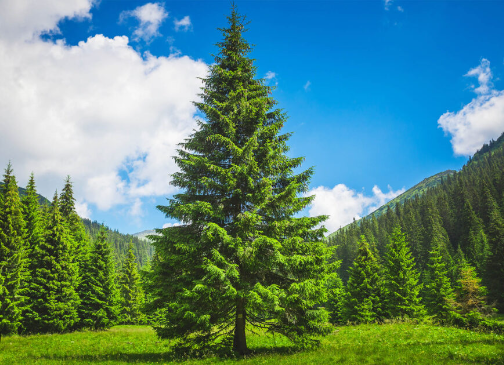
Fir trees are a group of evergreen coniferous trees. There are approximately 48–56 extant species, found on mountains throughout much of North and Central America, Europe, Asia and North Africa.
Firs can be distinguished from other members of the pine family by the way in which their needle-like leaves are attached singly to the branches with a base resembling a suction cup, and by their cones, which, like those of true cedars, stand upright on the branches like candles and disintegrate at maturity.
Many fir trees have a pleasant fragrance, and their branches or needles are sometimes used to make wreaths and other decorations during the holiday season due to their appealing scent.
Types of Fir
- Balsam Fir (Abies balsamea)
- Douglas Fir (Pseudotsuga menziesii)
- Noble Fir (Abies procera)
- Fraser Fir (Abies fraseri)
- Colorado Blue Spruce (Picea pungens)
- White Fir (Abies concolor)
- Subalpine Fir (Abies lasiocarpa)
- European Silver Fir (Abies alba)
Also Read: Difference Between Hardwood And Softwood Trees
Larch trees
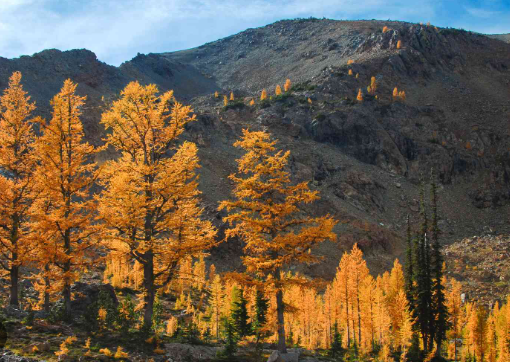
Larch trees are large deciduous trees with short needles and cones. They are native to the cooler regions of the northern hemisphere, where they are found in lowland forests in the high latitudes, and high in mountains further south. Some species can grow to be quite tall, with some reaching heights of over 150 feet (45 meters).
Larch trees have soft, needle-like leaves that are usually borne in clusters on short spurs along the branches. These needles are light green to bright green and turn a brilliant golden-yellow color in the fall. Unlike most conifers, which have evergreen needles, larch trees drop their needles in the autumn.
Types of Larch trees
- European Larch (Larix decidua)
- Siberian Larch (Larix sibirica)
- Western Larch (Larix occidentalis)
- Japanese Larch (Larix kaempferi)
- Tamarack (Larix laricina)
- Dahurian Larch (Larix gmelinii)
- Himalayan Larch (Larix griffithii)
Cedar Trees
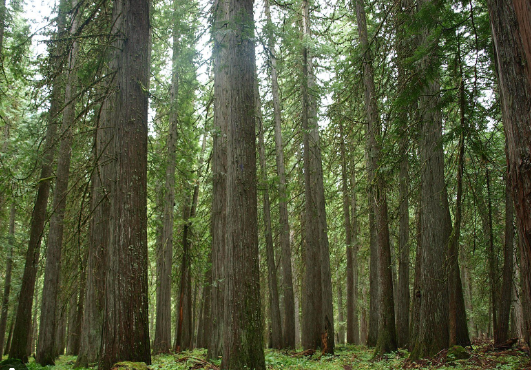
Cedar trees are a group of evergreen coniferous trees belonging to the genus Cedrus, which is part of the Pinaceae family. They are native to the mountains of the western Himalayas and the Mediterranean region. Cedar trees are moderately rapid growers that can reach towering heights of 60 feet or more, depending on the variety. Young trees are covered with smooth, dark-gray bark that becomes brown, fissured, and scaly with age. With attractive foliage comprised of scaly, fern-like needles that are densely packed, cedar trees create year-round ornamental appeal and thick coverage.
Types of cedar trees
- Lebanon Cedar (Cedrus libani)
- Atlas Cedar (Cedrus atlantica)
- Deodar Cedar (Cedrus deodara):
- Cyprus Cedar (Cedrus brevifolia)
- Cypriot Cedar (Cedrus brandisiana)
Western Hemlock
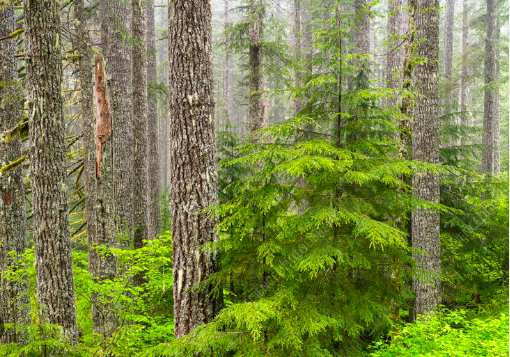
The western hemlock or western hemlock-spruce, is a species of hemlock native to the west coast of North America. This tree species is found in the coastal regions of western North America, stretching from Alaska in the north down to northern California in the south.
It is commonly associated with moist, temperate rainforests, where it thrives in areas with high rainfall and relatively mild temperatures. This tree is often found growing alongside other conifer species such as Douglas fir and Sitka spruce.
Western hemlock is a large tree; it usually grows 30 to 50 meters tall. It has a rather narrow crown and conspicuously drooping new growth at the top of the tree. It has mostly down-sweeping branches and delicate feathery foliage.
Types of western hemlock
- Coastal Western Hemlock (Tsuga heterophylla var. heterophylla)
- Mountain Western Hemlock (Tsuga heterophylla var. mertensiana)
Yews
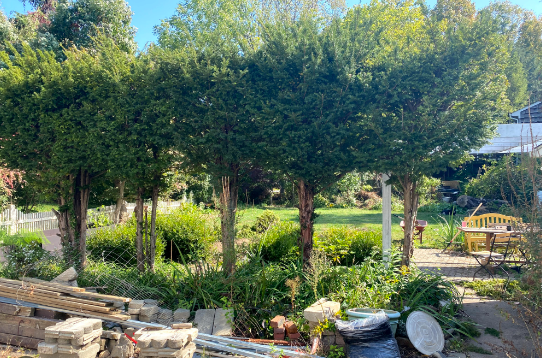
Yews (Taxus) are a varied group of coniferous shrubs and trees that produce seed cones called yew berries. Taxonomically, yews belong to the Taxaceae family and the Taxus genus, which contains around 8 to 12 species.
Yews have a widespread distribution across temperate regions, including Europe, North America, Asia and North Africa. Yew trees typically display slow growth, with dense dark green foliage, flat needle-like leaves that are spirally arranged on the stems, and separate male and female cones.
Types of Yew Trees
- European Yew (Taxus baccata)
- Canadian Yew (Taxus canadensis)
- Japanese Yew (Taxus cuspidata)
- Pacific Yew (Taxus brevifolia)
- Chinese Yew (Taxus chinensis)
- Florida Yew (Taxus floridana)
- Himalayan Yew (Taxus wallichiana)
- Korean Yew (Taxus cuspidata var. nana)
Also Read: Major Types of Maple Trees Around The World
Cypress trees

Cypress trees are a large classification of conifers. The trees can be tall and slender, or they may have a more pyramidal or columnar shape. Their bark is often reddish or brown and may peel in strips. Cypress trees are found in a wide range of environments, from wetlands to arid regions. They are known for their adaptability to various soil types and growing conditions.
Types of Cypress
- Bald Cypress (Taxodium distichum)
- Arizona Cypress (Cupressus arizonica)
- Mediterranean Cypress (Cupressus sempervirens)
- Monterey Cypress (Cupressus macrocarpa)
- Hinoki Cypress (Chamaecyparis obtusa)
- Sawara Cypress (Chamaecyparis pisifera)
- Chinese Swamp Cypress (Glyptostrobus pensilis)
Redwoods
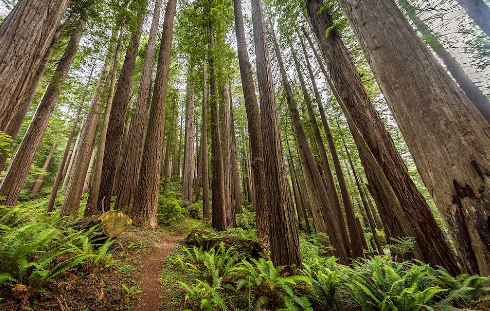
Redwoods are commonly found in California’s Sierra Nevada mountains. The redwood species contains the largest and tallest trees in the world. These trees can live for thousands of years. Mature trees can reach over 300 feet (91 meters) in height and have massive trunks with a circumference of more than 100 feet (30 meters).
Types of redwoods
- Coast Redwood (Sequoia sempervirens)
- Giant Sequoia (Sequoiadendron giganteum)
Juniper trees

Juniper trees are widely distributed across the Northern Hemisphere, and the genus includes more than 60 different species. Juniper trees vary in size, with some species growing as small shrubs and others reaching the size of small to medium-sized trees. The larger species can grow to heights of between 20 to 50 feet or more.
Junipers are native to North America, Europe, Asia, and Africa. They are most diverse in North America, where they can be found in various regions, from the southwestern United States to Canada.
Types of Juniper
- Common Juniper (Juniperus communis)
- Eastern Redcedar (Juniperus virginiana)
- Rocky Mountain Juniper (Juniperus scopulorum)
- Creeping Juniper (Juniperus horizontalis)
- Chinese Juniper (Juniperus chinensis)
- Sierra Juniper (Juniperus grandis)
- Utah Juniper (Juniperus osteosperma)
- Shore Juniper (Juniperus conferta)
Cyptomeria Trees

Cryptomeria commonly referred to as the Japanese cedar, although it is not a true cedar. These trees are native to East Asia, primarily Japan and China, and have been widely cultivated for their timber and ornamental value.
The tree has a conical or pyramidal shape when young, gradually becoming more columnar or irregularly shaped as it matures. Cryptomeria trees are typically large trees. Mature trees can reach heights of 50 to 70 feet (15 to 21 meters) or even taller.
In Japan, Cryptomeria wood is commonly used for making traditional Japanese buildings, furniture, and tea ceremony rooms.
Types of Cyptomeria trees
- Cryptomeria japonica ‘Globosa Nana’
- Cryptomeria japonica ‘Elegans’
- Cryptomeria japonica ‘Black Dragon’
- Cryptomeria japonica ‘Pygmaea’
- Cryptomeria japonica ‘Radicans’
- Cryptomeria japonica ‘Elegans Compacta’
Arborvitae Trees
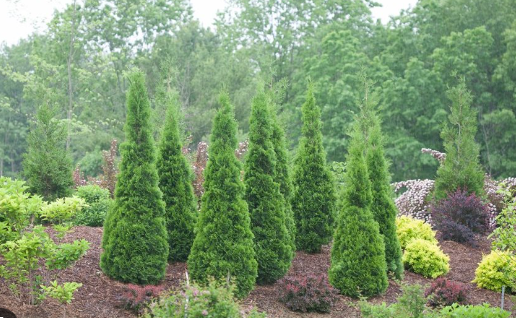
Arborvitae are native to North America and eastern Asia. These trees usually pyramidal in habit, with thin, scaling outer bark and fibrous inner bark, horizontal or ascending branches, and characteristically flattened, spraylike branchlet systems. Arborvitae can grow between 10 to 30 feet (3 to 9 meters) or more.
Types of Arborvitae
- American Arborvitae (Thuja occidentalis)
- Giant Arborvitae (Thuja plicata)
- Korean Arborvitae (Thuja koraiensis)
- Nigra Arborvitae (Thuja occidentalis ‘Nigra’)
- Smaragd Arborvitae (Thuja occidentalis ‘Smaragd’)